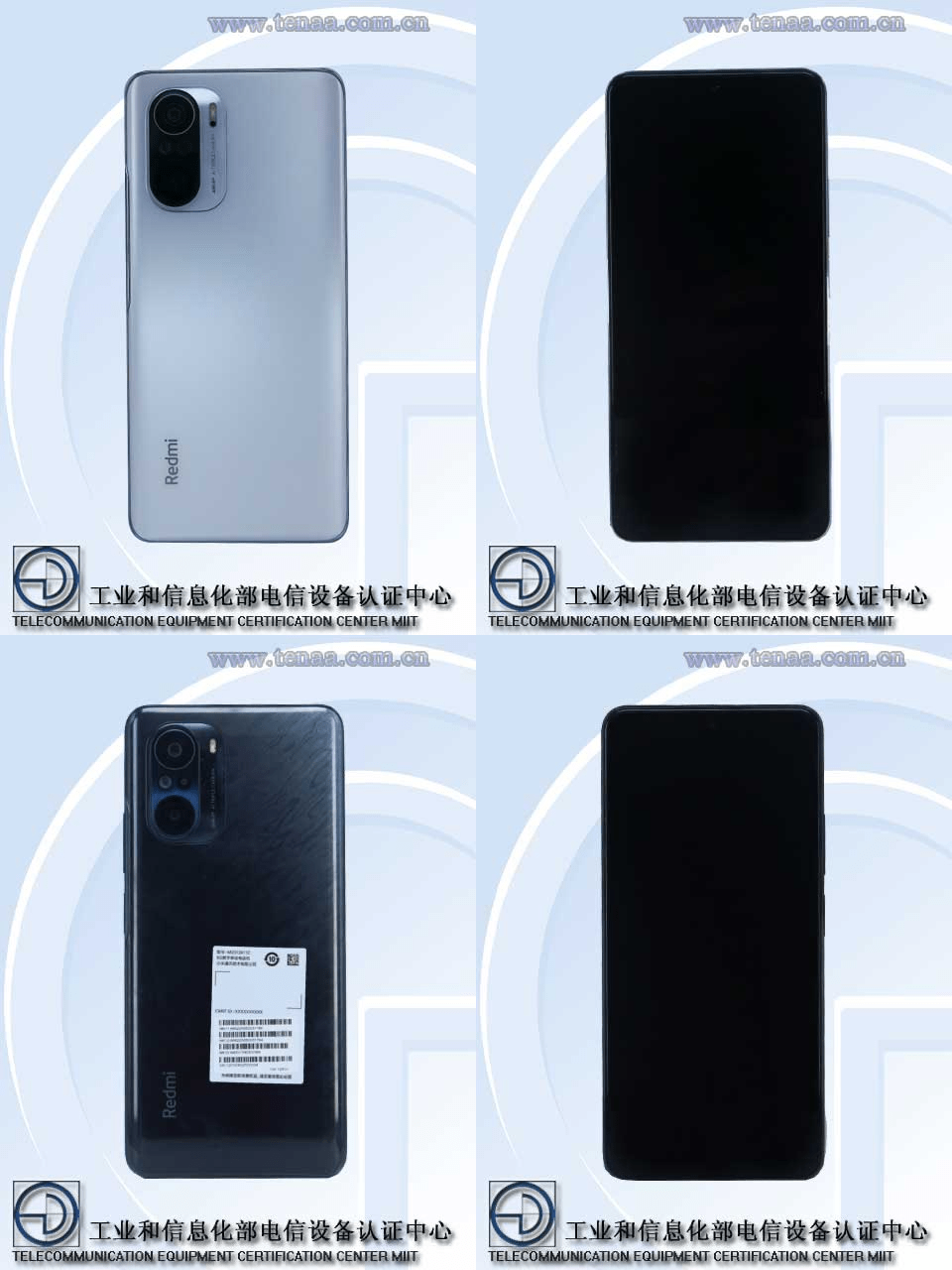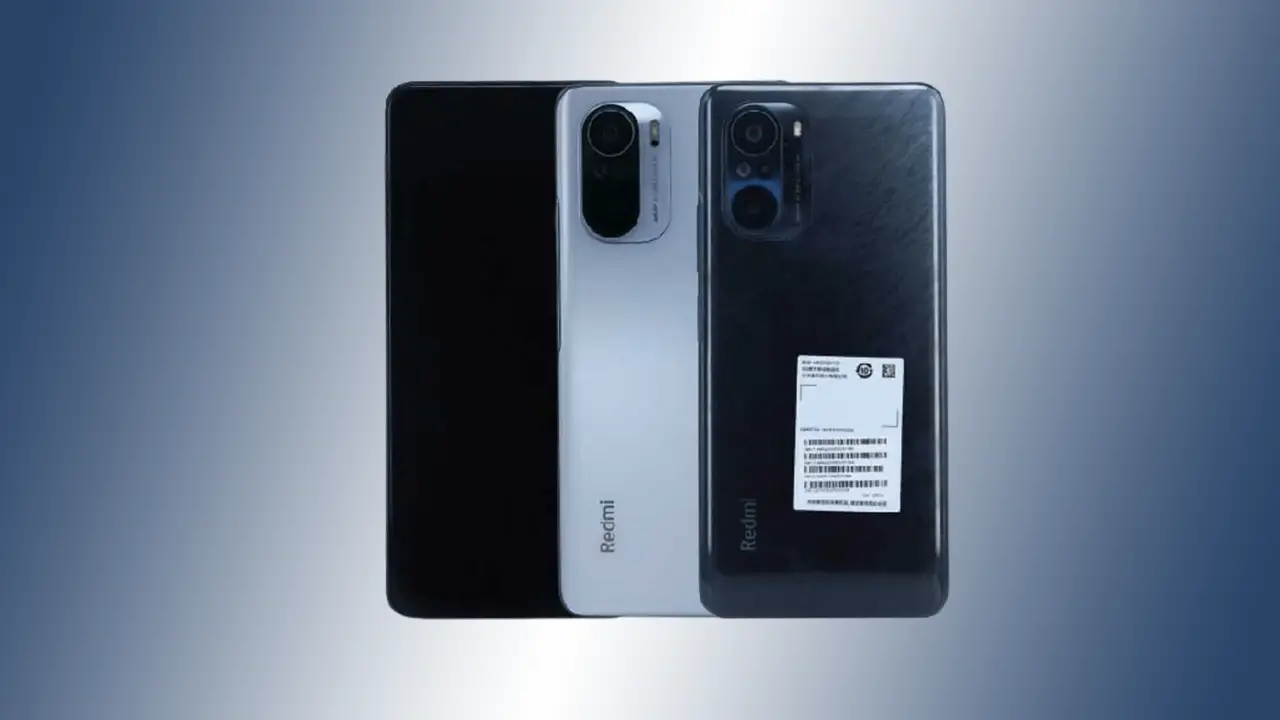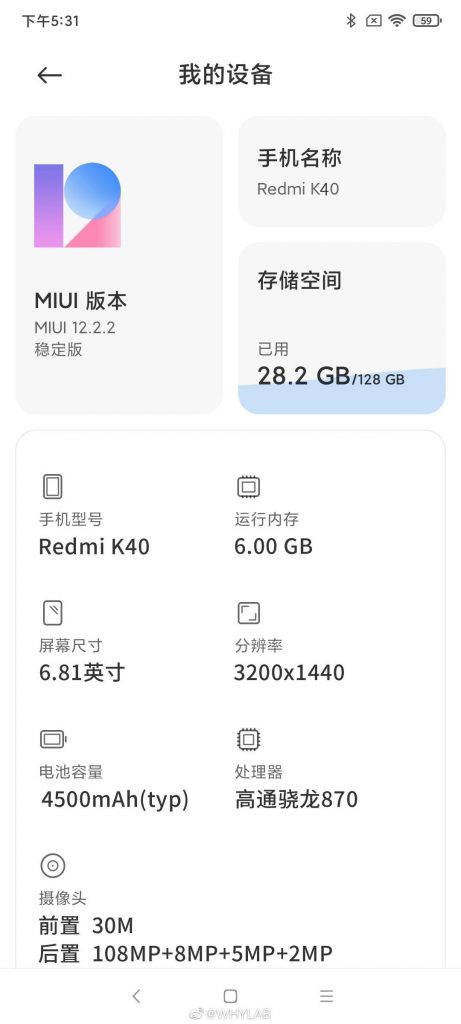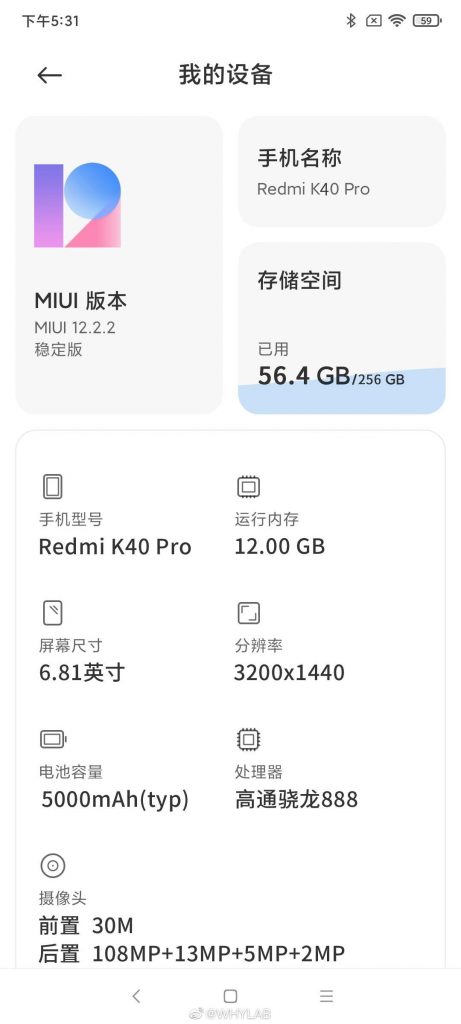The design of Redmi K40 revealed via a leaked TENAA listing ahead of the official launch scheduled on 25th February. In case you don’t know about TENAA, it is a Chinese Certification Agency. The TENAA listing gave us a look at the design from the front, rear and side. The previous-gen K-series smartphone was totally different from their other lineups, but this one almost looks similar to the recently launched new Mi 11 smartphone.
Redmi K40 features a rectangular camera module on the rear that has seems to possess a Quad camera array in it. There are two large camera sensors and in between are two smaller ones. It also looks like the fingerprint scanner is on the side but that can’t be confirmed as there are rumors of the phone having an AMOLED panel. On the front, there’s a display with a centered hole-punch cutout.

Other than that a few more screenshots were posted on the Chinese microblogging site Weibo about the specifications of the Redmi K40 series. The smartphone series will feature a 6.81-inch 2K display with a resolution of 3200 x 1440. The screen will also house a single hole-punch cutout at the top-center of the smartphone.
Under the hood, the Redmi K40 will feature the new Snapdragon 870 SoC whereas K40 Pro will be powered by the flagship Snapdragon 888 SoC. According to the screenshots, Redmi K40 will be paired with 6 GB of RAM and 128 GB of onboard storage whereas K40 Pro will be equipped with 12 GB RAM and 256 GB onboard storage.
In the camera department, both the smartphone will feature similar camera specifications. The Redmi K 40 series will have a quad-camera setup at the rear and a single punch-hole camera setup at the front. The quad read camera setup includes a primary 108-megapixel sensor, a secondary 8-megapixel sensor, a tertiary 5-megapixel sensor, and finally a 2-megapixel sensor. At the front, the smartphone is equipped with a 30-megapixel shooter for selfies.
The Redmi K40 and K40 Pro will be fueled by a 4500 mAh and 5000 mAh battery, respectively. The charger limit is yet not revealed but we can expect at least more than 30-watt (previous leaks suggest a 33-watt adapter in the box). The smartphones run on MIUI 12.2.2, Xiaomi’s own custom UI, on top of Android 11 (most probably).
According to the Weibo post, the Redmi K40 will be launched in China with a starting price tag of CNY 2,999 for the base variant and can go up to CNY 3,499. But again, this was just a leak, the pricing may differ while the announcement. The launch is scheduled for the 25th of February, 2021 in China. According to another leak, the Redmi K40 series will be exclusive for China Mainland only, and in the global market, it will be launched under the POCO brand, maybe the POCO F3 series.


